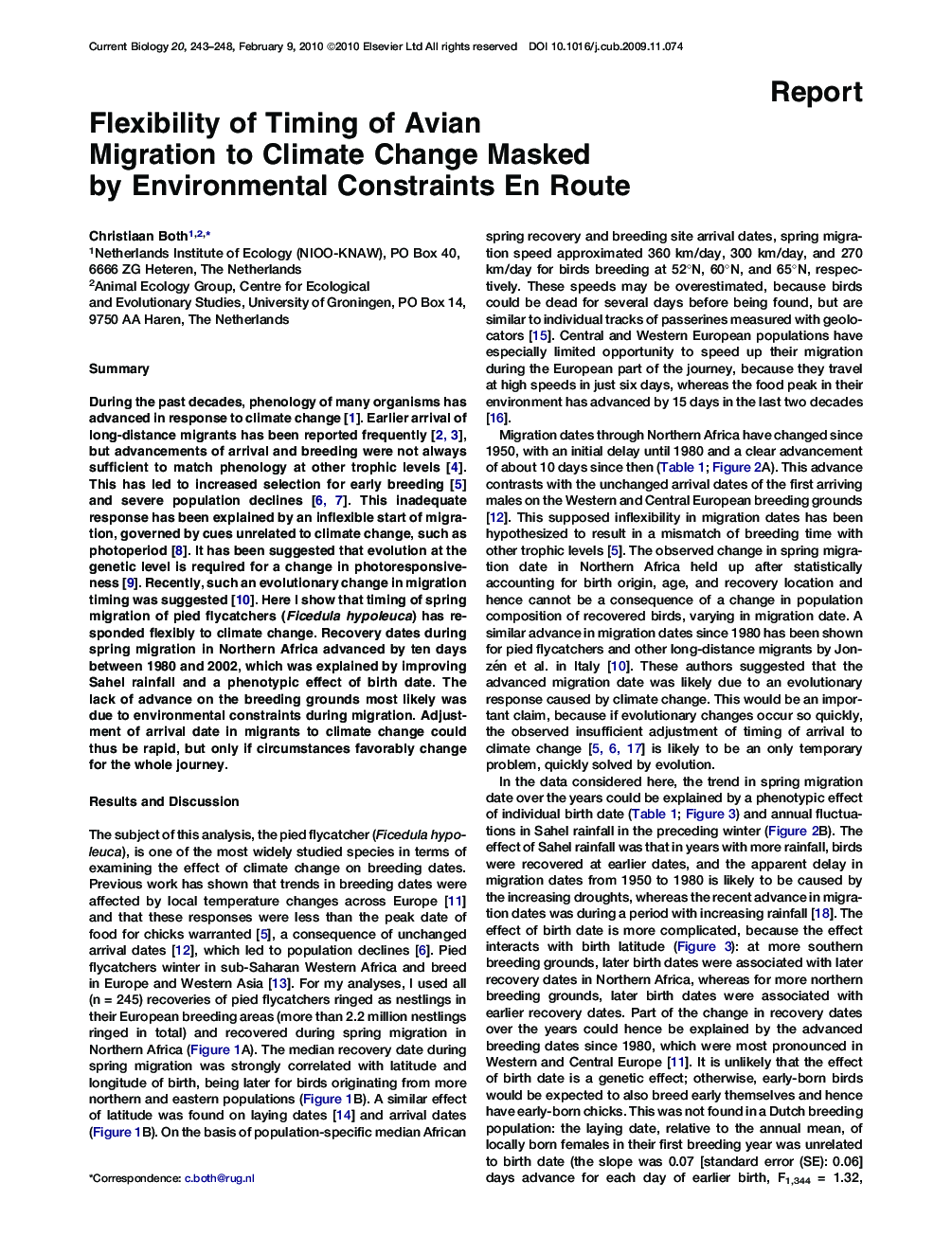| کد مقاله | کد نشریه | سال انتشار | مقاله انگلیسی | نسخه تمام متن |
|---|---|---|---|---|
| 2043917 | 1073382 | 2010 | 6 صفحه PDF | دانلود رایگان |

SummaryDuring the past decades, phenology of many organisms has advanced in response to climate change [1]. Earlier arrival of long-distance migrants has been reported frequently [2 and 3], but advancements of arrival and breeding were not always sufficient to match phenology at other trophic levels [4]. This has led to increased selection for early breeding [5] and severe population declines [6 and 7]. This inadequate response has been explained by an inflexible start of migration, governed by cues unrelated to climate change, such as photoperiod [8]. It has been suggested that evolution at the genetic level is required for a change in photoresponsiveness [9]. Recently, such an evolutionary change in migration timing was suggested [10]. Here I show that timing of spring migration of pied flycatchers (Ficedula hypoleuca) has responded flexibly to climate change. Recovery dates during spring migration in Northern Africa advanced by ten days between 1980 and 2002, which was explained by improving Sahel rainfall and a phenotypic effect of birth date. The lack of advance on the breeding grounds most likely was due to environmental constraints during migration. Adjustment of arrival date in migrants to climate change could thus be rapid, but only if circumstances favorably change for the whole journey.
► Climate change makes migrant birds arrive too late at their breeding grounds
► Against presumed inflexibility, flycatcher migration advances with climate change
► Earlier migration results from better winter conditions and earlier birth date
► Earlier migration does not lead to earlier arrival, because of constraints en route
Journal: - Volume 20, Issue 3, 9 February 2010, Pages 243–248